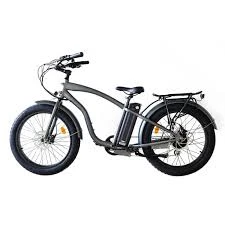
- Afrikaans
- Albanian
- Amharic
- Arabic
- Armenian
- Azerbaijani
- Basque
- Belarusian
- Bengali
- Bosnian
- Bulgarian
- Catalan
- Cebuano
- Corsican
- Croatian
- Czech
- Danish
- Dutch
- English
- Esperanto
- Estonian
- Finnish
- French
- Frisian
- Galician
- Georgian
- German
- Greek
- Gujarati
- Haitian Creole
- hausa
- hawaiian
- Hebrew
- Hindi
- Miao
- Hungarian
- Icelandic
- igbo
- Indonesian
- irish
- Italian
- Japanese
- Javanese
- Kannada
- kazakh
- Khmer
- Rwandese
- Korean
- Kurdish
- Kyrgyz
- Lao
- Latin
- Latvian
- Lithuanian
- Luxembourgish
- Macedonian
- Malgashi
- Malay
- Malayalam
- Maltese
- Maori
- Marathi
- Mongolian
- Myanmar
- Nepali
- Norwegian
- Norwegian
- Occitan
- Pashto
- Persian
- Polish
- Portuguese
- Punjabi
- Romanian
- Russian
- Samoan
- Scottish Gaelic
- Serbian
- Sesotho
- Shona
- Sindhi
- Sinhala
- Slovak
- Slovenian
- Somali
- Spanish
- Sundanese
- Swahili
- Swedish
- Tagalog
- Tajik
- Tamil
- Tatar
- Telugu
- Thai
- Turkish
- Turkmen
- Ukrainian
- Urdu
- Uighur
- Uzbek
- Vietnamese
- Welsh
- Bantu
- Yiddish
- Yoruba
- Zulu
Oct . 15, 2024 01:46 Back to list
Choosing the Right Size for Your Mountain Bike for Optimal Comfort and Performance
Understanding Mountain Bike Sizing
Choosing the right size for your mountain bike is crucial for comfort, performance, and safety. Unlike standard bicycles, mountain bikes come in various geometries and sizes, tailored for different terrains and riding styles. Here, we’ll explore the factors that impact mountain bike sizing and provide you with guidance on finding the perfect fit.
1. Importance of Bike Size
The right bike size can greatly enhance your riding experience. A bike that is too small can cause discomfort, especially in prolonged rides, leading to fatigue and inefficient pedaling. Conversely, a bike that is too large may compromise control, making it harder to navigate tricky trails. An appropriately sized bike allows for better weight distribution and easier maneuverability.
2. Key Measurements
When sizing a mountain bike, several key measurements should be considered
- Standover Height This is the distance from the ground to the top tube of the bike frame. To find the right standover height, straddle the bike and ensure there’s at least 1-2 inches of clearance for your inseam. This will facilitate easy mounting and dismounting, especially in tricky situations.
- Seat Tube Length This measurement determines the height of the saddle from the ground. A properly adjusted saddle height is essential for optimal pedaling efficiency. When seated, your leg should be almost fully extended at the bottom of the pedal stroke, with a slight bend at the knee.
- Top Tube Length The length of the top tube affects your reach while riding. If the top tube is too long, you may feel stretched out, leading to discomfort. Conversely, a short top tube may result in a cramped riding position.
- Frame Size Mountain bike frames typically come in sizes like Small, Medium, Large, and Extra Large
. Each manufacturer may have slightly different size charts, so it's essential to refer to the specific brand’s sizing guide.mountain bike sizing

3. Sizing Charts and Recommendations
Most mountain bike brands provide sizing charts based on rider height and inseam measurements. Here’s a general guideline for adults
- Small (15 - 16) Ideal for riders 5'1 to 5'6. - Medium (17 - 18) Best for riders 5'6 to 5'10. - Large (19 - 20) Suitable for riders 5'10 to 6'1. - Extra Large (21 - 22) Designed for riders 6'1 and taller.
These ranges can vary by brand and model, so always consult the specific sizing chart for the bike you’re considering.
4. Test Riding
One of the best ways to ensure you've chosen the right size is through test riding. Visit local bike shops and try out different sizes and styles. Pay attention to how the bike feels when you’re standing up, sitting down, and navigating turns. Make adjustments as necessary; the goal is to feel balanced and comfortable.
5. Adjustments and Customizations
Remember that bike sizing is just the starting point. You may need to make further adjustments to the saddle height and angle, handlebar height, and even consider changing components like the stem for a better fit. Investing in a professional bike fitting can also be beneficial, especially if you plan on spending significant time on your bike.
Conclusion
Choosing the right mountain bike size is an essential step toward enjoying outdoor trails to the fullest. By taking the time to measure your body, understand the key sizing features, and test ride multiple bikes, you will find a bike that not only fits you perfectly but also enhances your riding experience. Always remember, a well-fitted bike is not just about comfort; it also promotes better control, confidence, and ultimately a more enjoyable ride. Happy biking!
-
The Ultimate Kids' Four-Wheeler Experience
NewsJul.09,2025
-
The Ultimate Guide to Mountain Bikes: Gear Up for Your Ride
NewsJul.09,2025
-
The New Age of Cycling: Electric Bikes for Every Rider
NewsJul.09,2025
-
The Best Kids Bicycles: Ride in Style and Safety
NewsJul.09,2025
-
The Best 3-Wheel Scooters for Kids: Fun, Safety, and Adventure
NewsJul.09,2025
-
Revolutionize Your Ride: Affordable Electric Bikes
NewsJul.09,2025
-
Finding the Perfect Mountain Bike for Every Rider
NewsJul.09,2025



